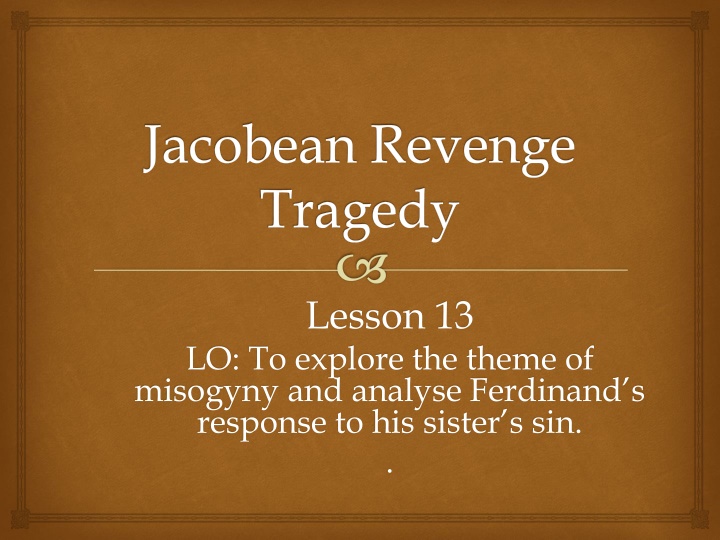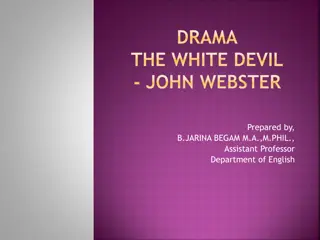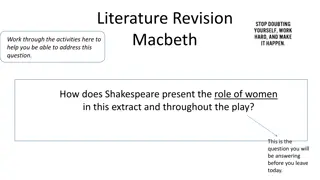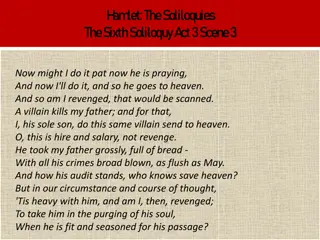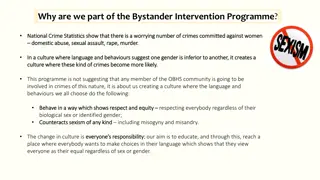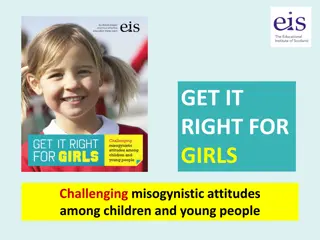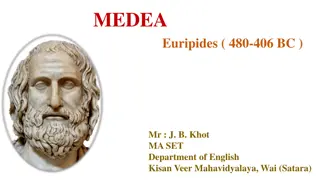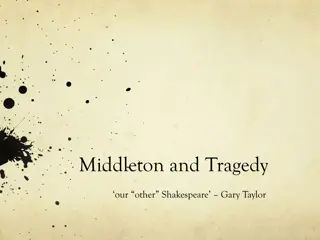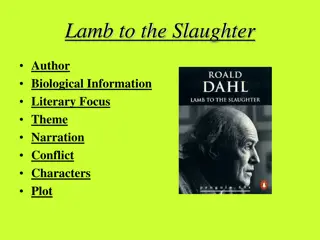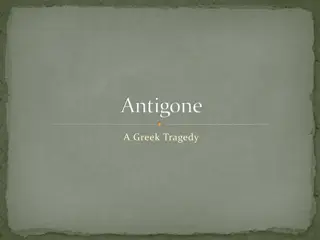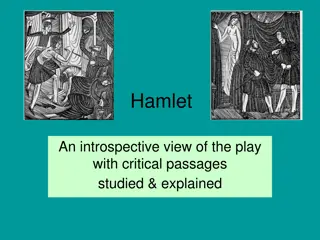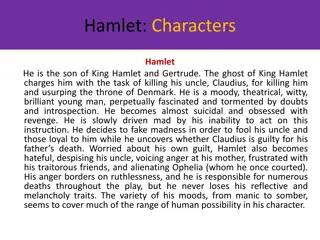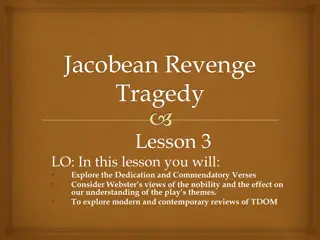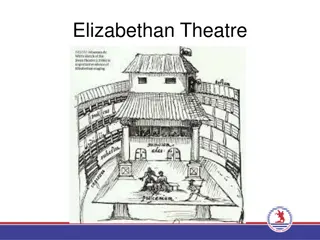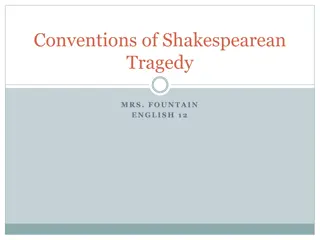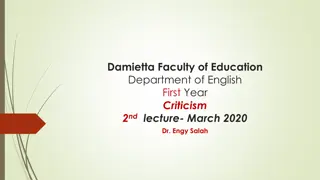Misogyny in Jacobean Revenge Tragedy
The theme of misogyny in Jacobean revenge tragedy plays like "The White Devil" and "The Duchess of Malfi" is examined, focusing on the societal and biblical contexts that influence the portrayal of female characters. Through analysis of Ferdinand's response to his sister's sin, the exploration delves into the historical treatment of women, reflecting the changing perceptions and challenges faced by women in both the Jacobean era and modern society.
Download Presentation

Please find below an Image/Link to download the presentation.
The content on the website is provided AS IS for your information and personal use only. It may not be sold, licensed, or shared on other websites without obtaining consent from the author.If you encounter any issues during the download, it is possible that the publisher has removed the file from their server.
You are allowed to download the files provided on this website for personal or commercial use, subject to the condition that they are used lawfully. All files are the property of their respective owners.
The content on the website is provided AS IS for your information and personal use only. It may not be sold, licensed, or shared on other websites without obtaining consent from the author.
E N D
Presentation Transcript
Jacobean Revenge Tragedy Lesson 13 LO: To explore the theme of misogyny and analyse Ferdinand s response to his sister s sin. .
Misogyny Misogyny means hatred of women. At the time of the Renaissance there was increased debate about the nature of women following on from the medieval debates about Eve as the cause of evil in the world. Like his contemporary dramatists, Webster engages with this debate through his plays, showing its social and economic causes.
Misogyny as a theme The White Devil was published in 1612 and performed at the Red Bull Theatre, Clerkenwell by The Queen's Men Theatre Company. The Duchess of Malfi was performed two years later in 1614 (published 1623) at the indoor Blackfriar s theatre. In The White Devil the central female character of Vittoria is constantly judged by others to be a whore and a temptress
Context: The Bible In the first book of the Bible, Genesis, the writer describes the creation by God of the first man and woman, Adam and Eve. However, in explaining how mortality and sin came into the world, the writer tells how Eve succumbed to the temptation of the serpent (traditionally associated with the devil) and then seduced Adam into evil, resulting in their being expelled from Paradise
Context: Society In The White Devil, Webster presents us with contemporary ideas about women. He demonstrates how patriarchal structures define the position of women in the culture, particularly as exercised through the Church and the state. In the play these are represented by Cardinal Monticelso and Francisco de Medici. (also seen in Malfi) Are Webster's female roles hard to delineate because that was the case for women generally in the Jacobean era? Or might this ambiguity reflect Webster's unease about the patriarchal certainties of his culture, as voiced by many of the play's male characters? The ideological position of the patriarchy would say that: Men are associated with the functions of the mind and reason Women are associated with the functions of the body and passion. This would mean that women are more animalistic than men. They could then be criticised for their unbridled sexual passion; a passion that was seen as very dangerous.
Context: modern audiences The position of women in society has changed since the seventeenth century, but playgoers today can still recognise the issues faced by characters like Vittoria and The Duchess in their environment.
Ferdinand Is Ferdinand simply a misogynist? Read the worksheet you have been given. What do the quotes suggest about him?
Check your learning Write a reader response to the following question: Is Ferdinand simply a misogynist? Plan your argument carefully using textual evidence. Apply wider reading, context and alternative readings (e.g. contemporary vs modern or feminist approach) to your response.
